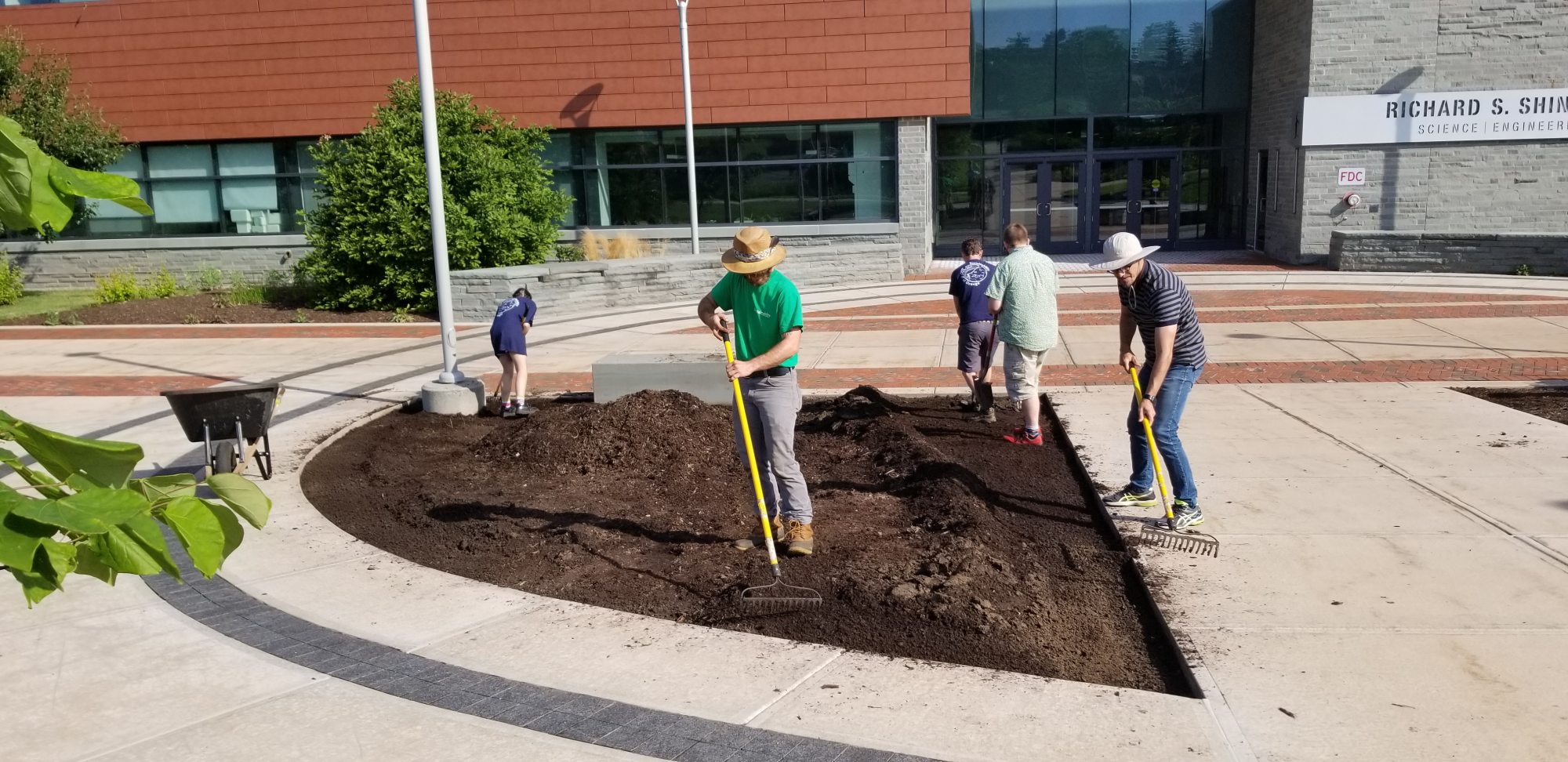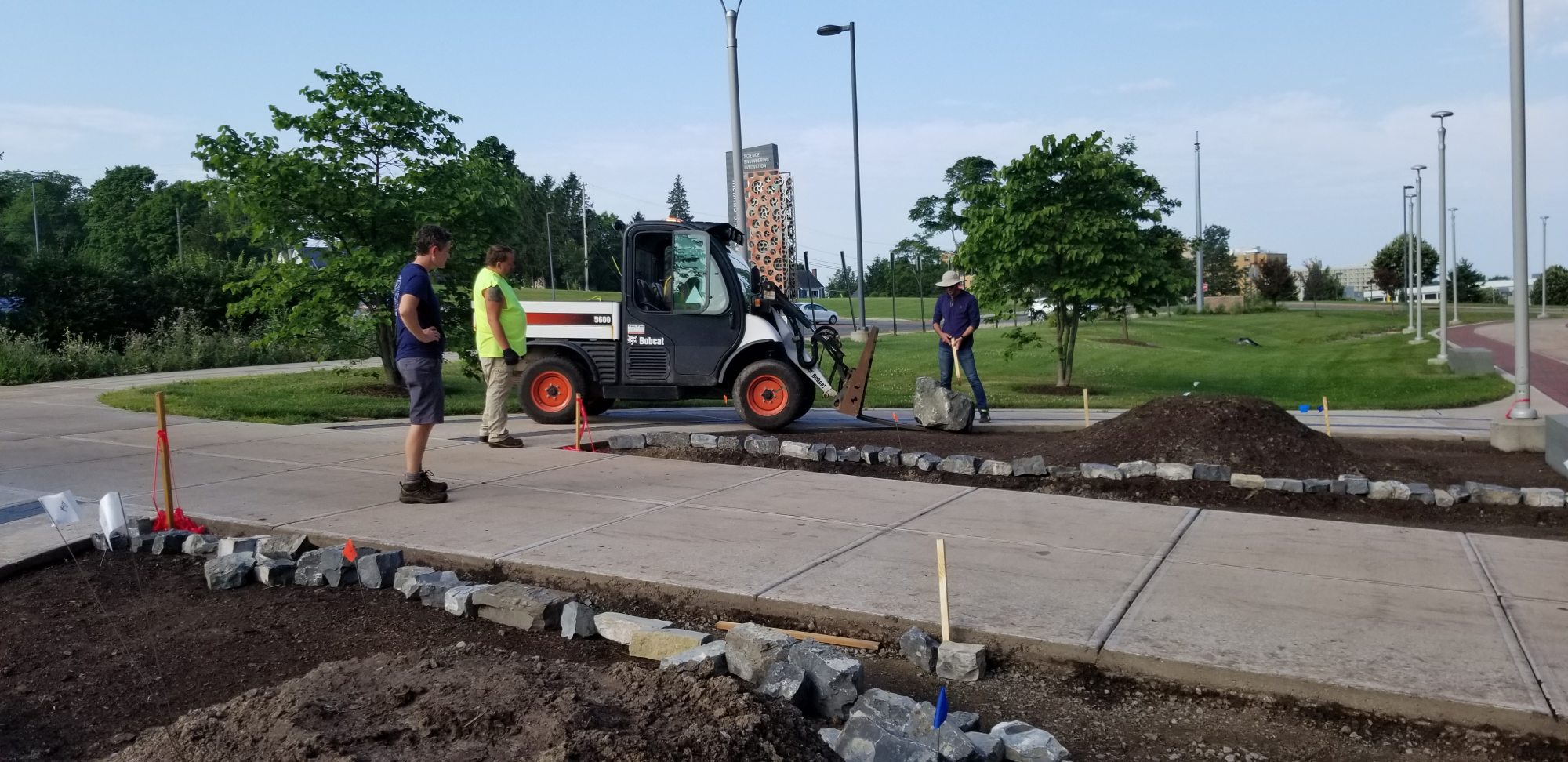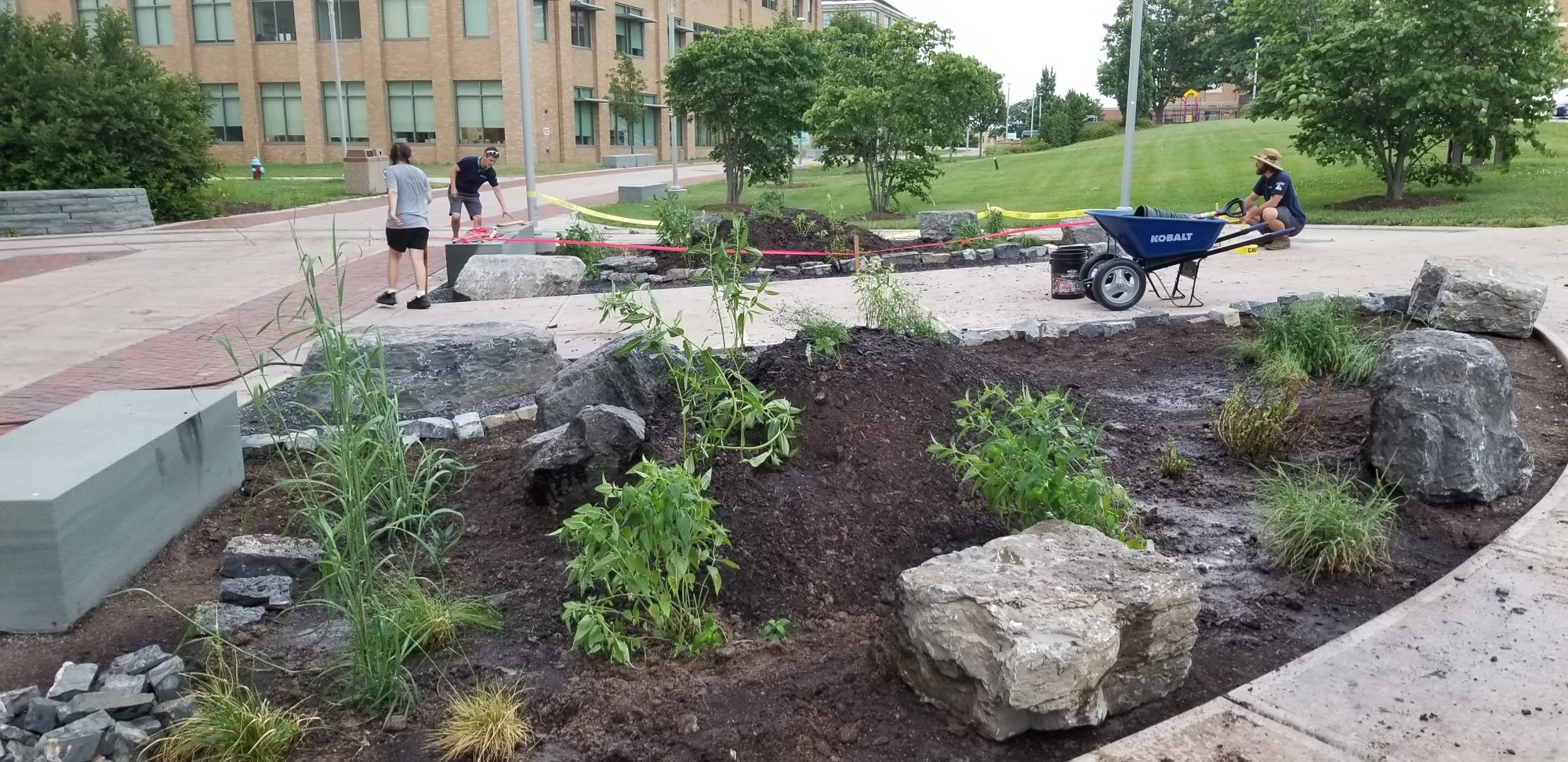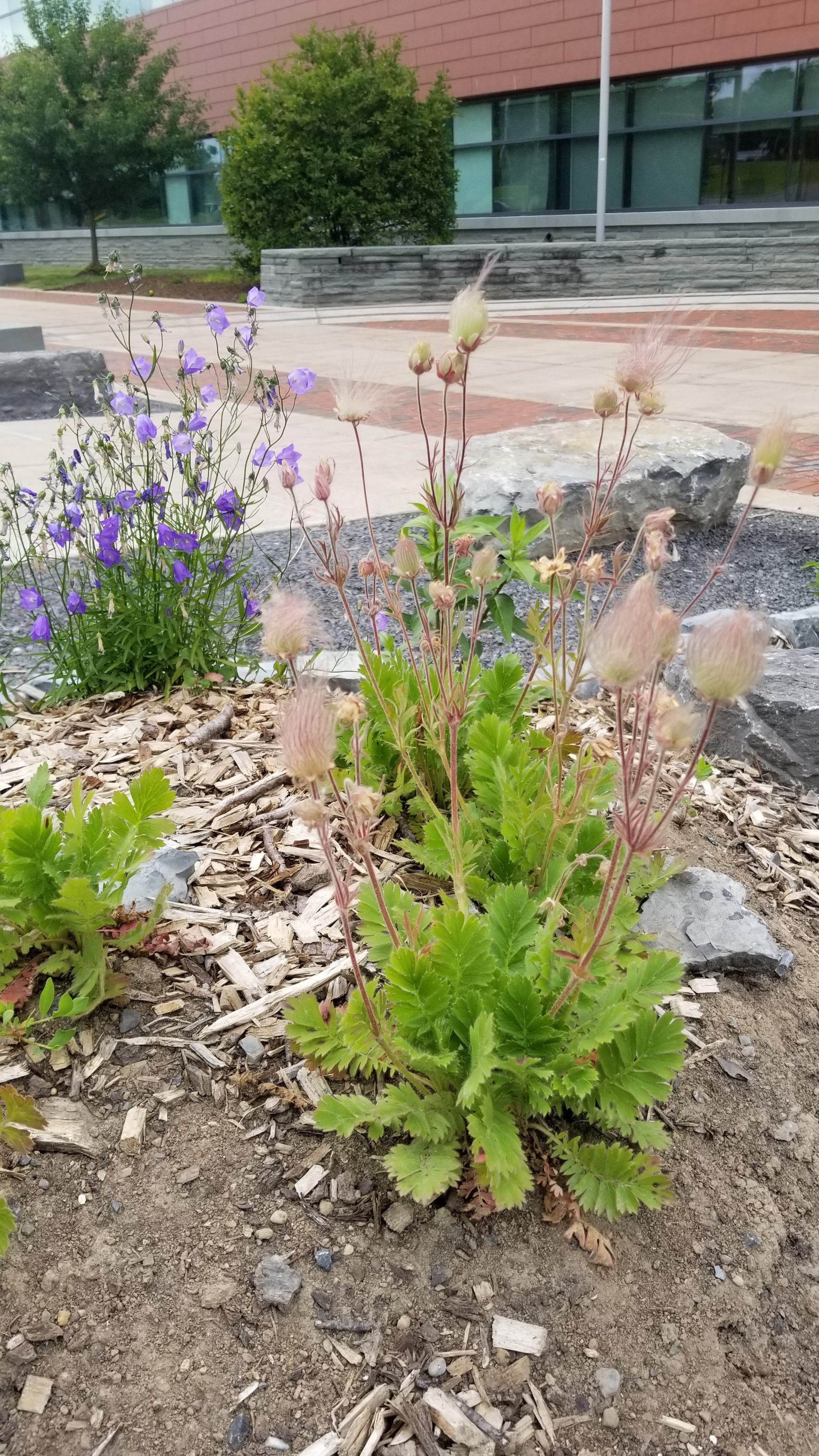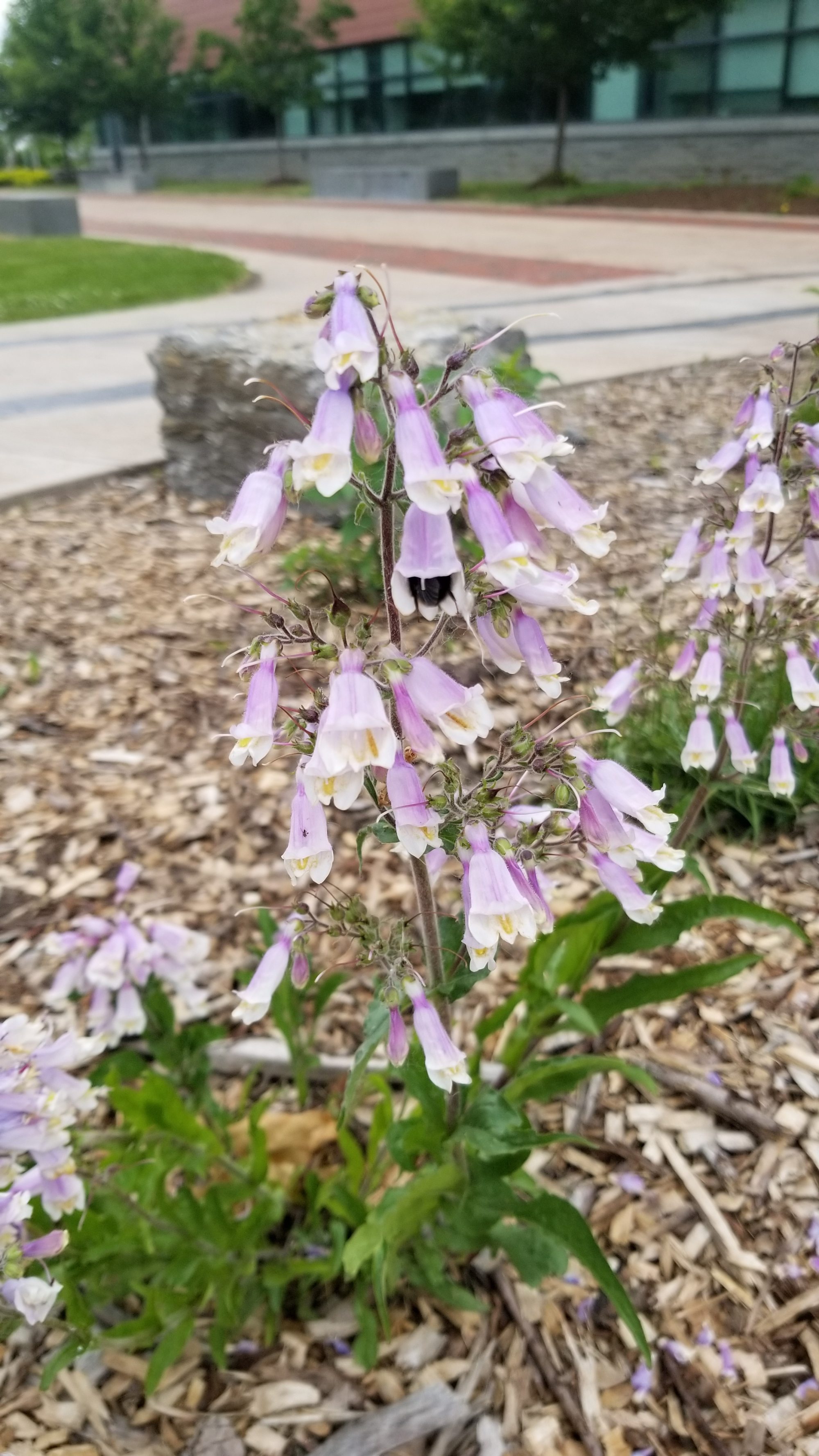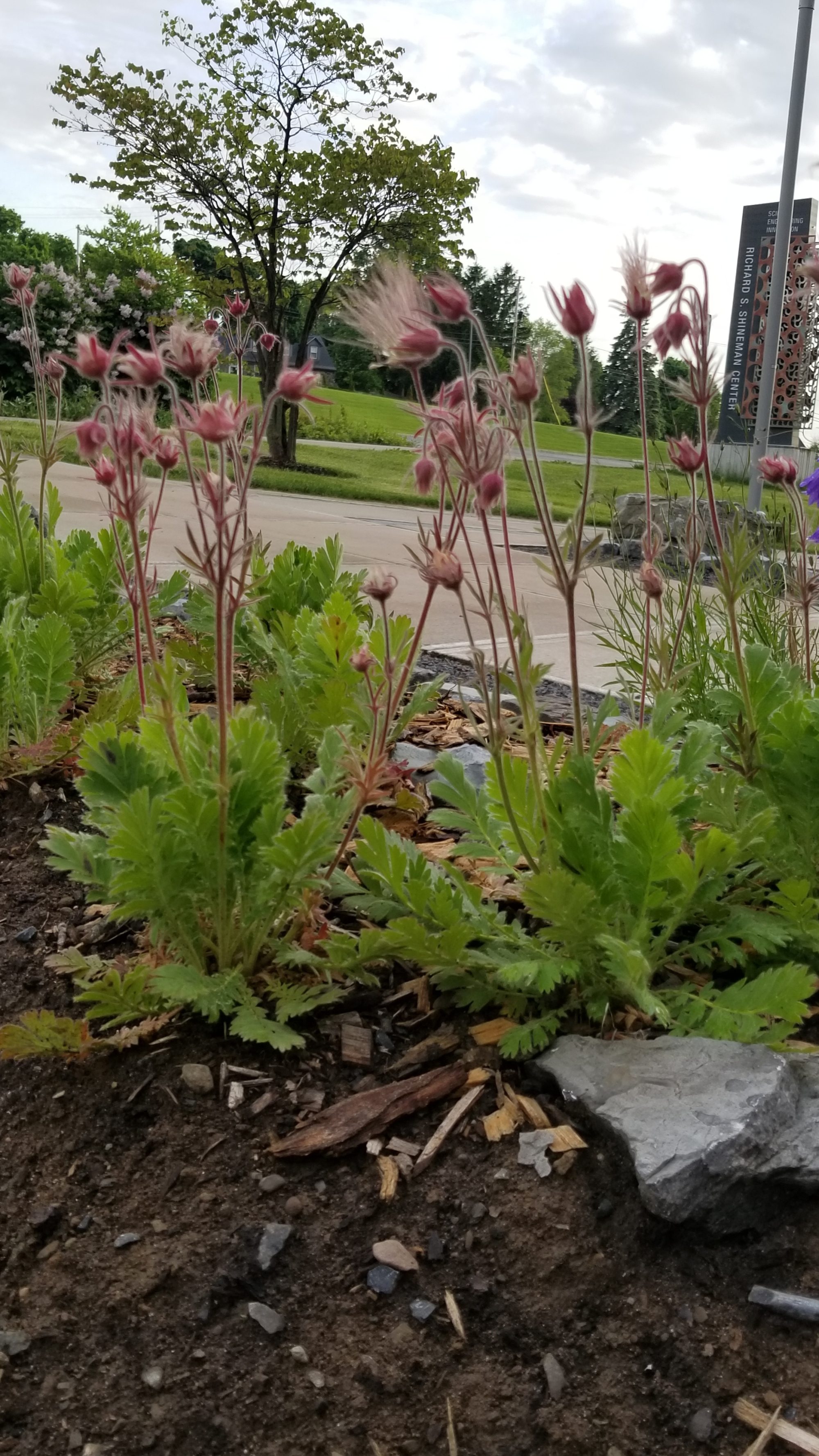The SUNY Oswego alvar garden beds help educate the campus and the public about a rare global ecosystem found along Lake Ontario.
The gardens provide an opportunity for visitors to the Shineman Center to see noteworthy native plants of conservation importance in our region and promote their stewardship. Additionally, the diversity of plants in the garden provides critical food and habitat islands for native pollinators that are in decline globally.
These gardens were established in July 2023 as a collaborative project of C. Eric Hellquist (Department of Biological Sciences), Kate Spector (Sustainability Office), and Pezhman Raeisian (SUNY Oswego graduate student and landscape architect).
